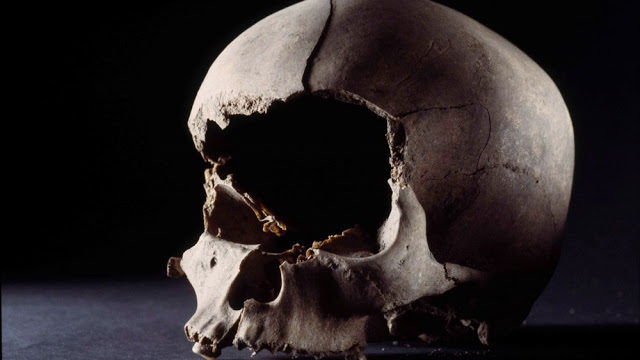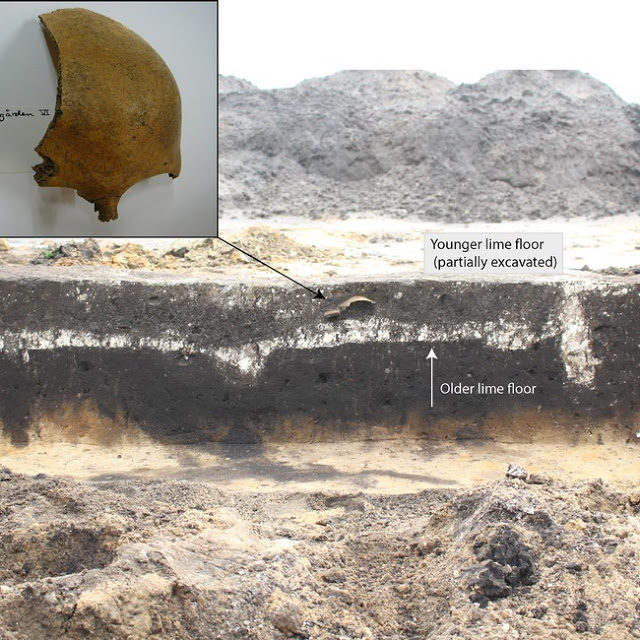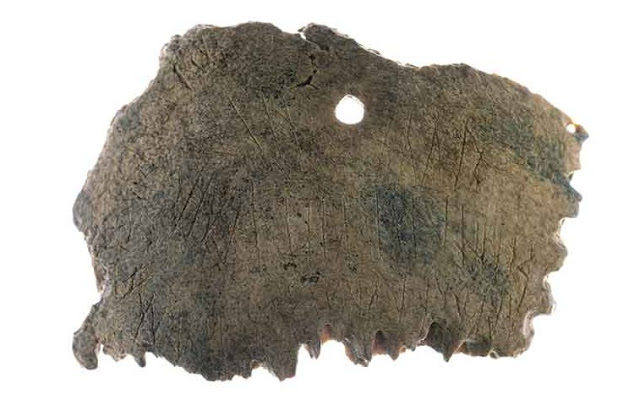
a pit house from the 9th century in Aarhus, Denmark
According to new research, Vikings kept bits of skulls and even dead infants in their homes, among other things, under doorways and floors, national broadcaster NRK reported.
Archaeologist Marianne Hem Eriksen at the University of Oslo has studied 40 archaeological finds of skull remains around Scandinavia from the Iron Age, found from about 250 BC until about 1050 AD, which corresponds to the end of the Viking Age.
"Parts of corpses were sometimes placed around farms and inside long houses. This may not have been a random act", Hem Eriksen mused. "It must have been important for them to have their dead nearby. It obviously made sense for them to have parts of dead bodies this close to daily life", she continued.
While previous explanations suggest the bones or body parts came from nearby burial sites that have been disturbed or destroyed, Hem Eriksen believes these were planned and deliberate actions.
"We have found especially many remains of skulls in the houses. I think the head may have been used in different ways. Either to preserve the essence of someone who was dead, or to deliberately try to destroy the personality of an enemy", Eriksen suggested.

One of the most famous skull finds from the Iron Age was made in Ribe, Denmark. The Ribe skull is etched with runes and names of the Norse Gods Odin and Tyr. There is also a hole drilled in it, which made several experts believe the bone bit could have been used as an amulet to help with pain and disease.
Another recurring motif was young children, especially newborns and up to the age of one, buried in wall foundations, pits in the courtyard, and even by fireplaces where people cooked and ate.
"In some places, it seems like it's been a tradition to bury children's bodies in the house for generations", Hem Eriksen said. According to her, children were perceived as magical objects. "They may have created a bond between people, the houses and the place. The same may apply to the skull parts", Hem Eriksen said.
"The deceased were biologically dead, not socially", Gunnhild Rothe, a historian of religion and the author of books on the Norse religion, chimed in.
According to Rothe, it is difficult for people with today's thought patterns to understand this mentality, where death and the dead were part of everyday life.
"Knowledge of the past shows that we cannot take today's values for granted. Our ancestors lived in a society permeated with violence. Then people thought completely differently about human dignity and the body", Rothe said.
A tell-tale example from Norse mythology is the giant Mimir, who was renowned for his knowledge and wisdom, but beheaded during the war between gods. Afterward, Odin carries around Mimir's head and it recites secret knowledge and counsels him.
The study is published in World Archaeology.




Comment: While the burial rituals aren't entirely clear from the findings, it's notable that at Çatalhöyük, a community that thrived in Turkey 9,000 years ago, burials were also kept close to home: See also: